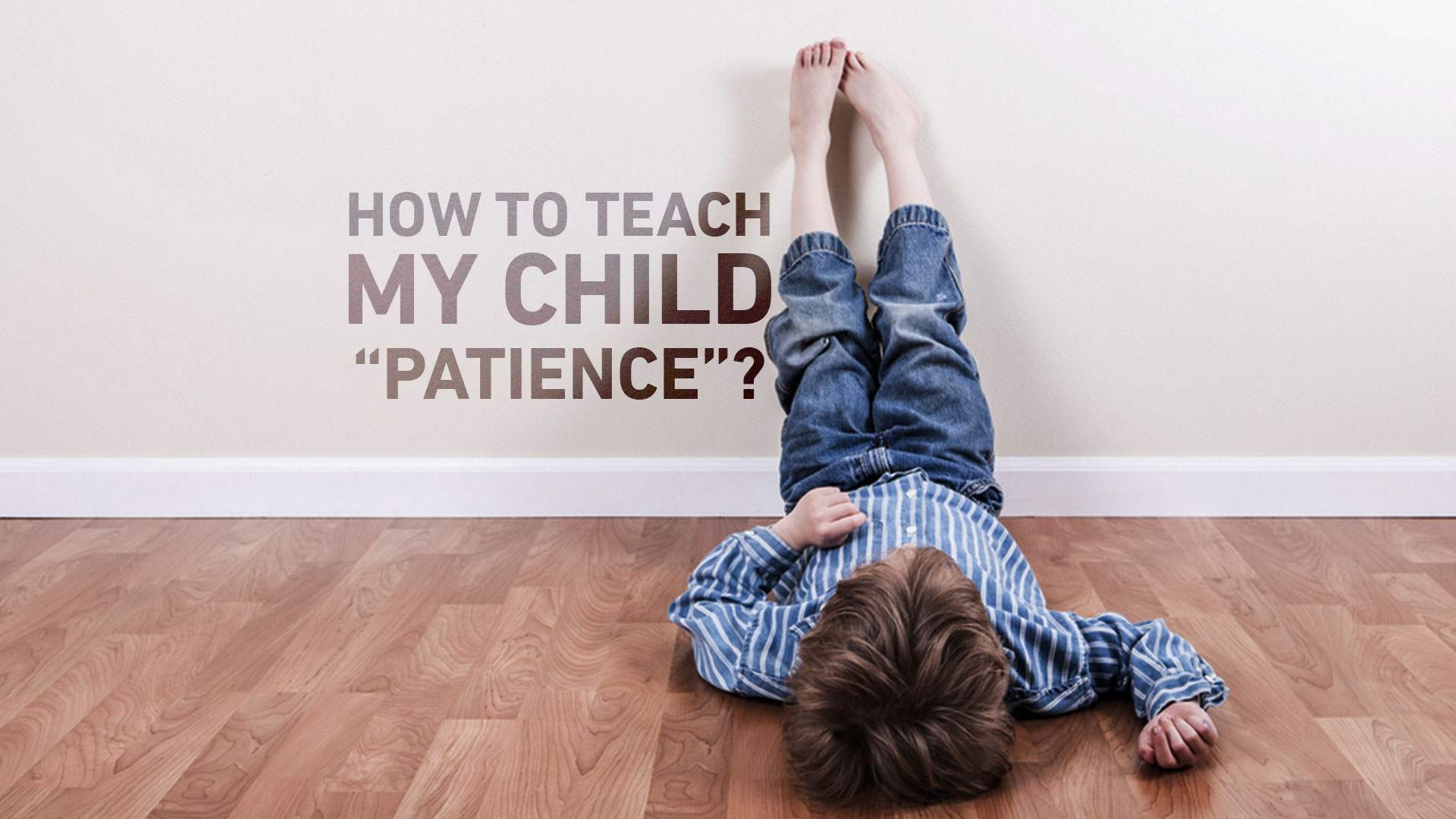
All good things happen with some patience.
The virtue of patience has been praised by philosophers and recommended by all religions that the three heavenly books unanimously agreed upon it.
Just as adults need some time to deal with it, a child needs to hear about it and experience it at a young age in order to grow up accepting it as one of the facts of life.
Why does a child need to learn patience?
Children are insistent by nature, and most of the time they have the attitude “I want this, and I want it NOW”. I want my meal “NOW”, I “cannot wait” to see the movie; I am “bored” I do not want to do my homework, let us go out “immediately” …and so on.
First of all, do not panic, it is human behaviour. But it is important for your child to learn to be patient at an early age.
Children should be aware that not all their wishes will be fulfilled right away.
Benefits of teaching your child to be patient:
- Improve the child’s concentration.
- To live for the moment.
- Protection from anxiety, nervousness and tension.
- Maintaining self-control and developing self-confidence.
- Teaching how to deal with failure.
How to teach my child to be “patient”?
The process of teaching a child how to be patient requires patience!
Below are some tips and ideas that will help you accomplish the task:
- You should start talking with the child about the importance of patience and its positive impact on life. Talk to your child openly and clearly, they will understand.
- You should be a role model for the child, let patience be demonstrated in your daily life actions and behaviours.
- Dividing the day into sections, each period contains a set of activities, and the child should wait until the end of each stage.
- You should give justifications for your refusal, “I cannot bring you a glass of juice now, because I am talking on the phone. “I can fulfil your request after I finish my phone call” you Get rid of “after a while” “in a little while” “not now.”; all these negative sentences mean nothing to the child.
- Use the idea of “sequencing of events” instead of a period of time, for example, “we will go to the club after we finish lunch” instead of “we will go to the club at 8 o’clock”. This sequence is easy for the child to understand.
- Never give in to constant urgency, it is very important to be decisive at this time. Simply say “no” and state your reasons.
- Try to take advantage of the daily events that we all go through to teach the child patience, such as waiting for the doctor’s appointment, the queue at the bank or supermarket, and waiting for your turn at the gas station to refuel, or even rush hour traffic.
These are the perfect times and a good opportunity to talk to your child about the inevitability of life that requires patience.
- Gardening is also a good exercise to help your child to be patient. You can choose any type of houseplants, such as beans or wheat, plant a seed and watch it grow together day by day.
- Never use patience as punishment in case the child made a mistake, this will backfire.
- Praise the child if he positively responded to the instructions and showed patience.
Games and exercises that teach patience
- Silence game: You have to ask the child to be silent for a specified period of time and speak after the period has elapsed. Use your phone timer for this.
- Fruit eating game: Choose a specific fruit and ask the child to eat it for a longer period of time than usual, for example, twenty minutes to eat a bunch of grapes. Try to have fun.
- Hidden Gift: Choose a gift that the child likes and put it in a hidden place in the house, and ask him to look for it within a relatively long period of time with a promise to keep it- if found.
- Alarm: Choose any event or activity, such as going out of the house, riding in the car, or playing video games, and then set the mobile alarm for a certain period of time, provided that this activity does not start until the mobile alarm rings.
- Puzzle: Choose a large puzzle (not less than 1000) and then ask the child to join you in collecting it, invite family and friends.
- Coloring game: buy a Mandala colouring book and share the experience with the child, calmly and patiently.
- Baking: in which the child shares bread with you and waits for the result after the settlement.
- Card game: Prepare a number of cards and show them to your child for one minute, then turn them back and ask him to pick the identical card.
- Go Fishing: It is the pinnacle of teaching patience to children and adults alike, take the child to a fishing place, cast bait, and wait for the fish- patiently!
Patience as lessons from the past
Telling real stories to the child to emphasize the value of patience gives credibility to your efforts.
Tell the real stories of people or children who have been patient until their wishes and dreams come true.
Also, the stories of the prophets and messengers in the heavenly books are full of lessons until they obtained what they wanted with the support of God, This is a good opportunity to explain the religious aspect of patience and its results as a reward from God.
